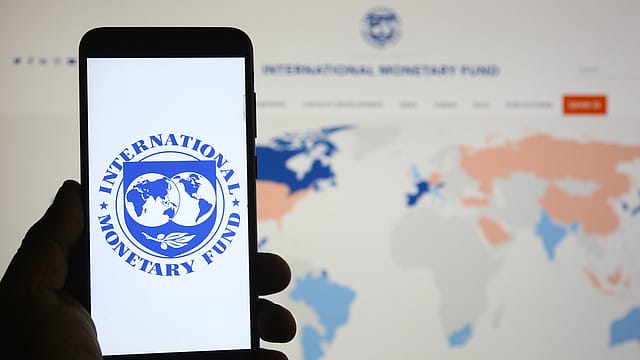IMF reclassifies India's exchange rate regime on forex interventions
ADVERTISEMENT

The International Monetary Fund (IMF) has reclassified India's exchange rate regime to "stabilized arrangement" from "floating" between December 2022 and October 2023, suggesting that foreign exchange interventions likely exceeded levels necessary to address disorderly market conditions.
Amid the severe external shocks in 2022, the Reserve Bank of India (RBI) used previously accumulated foreign exchange reserves to smooth excessive market volatility, but more recently foreign exchange intervention (FXI) has contributed to the exchange rate moving within a very narrow range, the IMF says in its Article IV report for India.
The IMF says its staff diverged from the Indian authorities on the exchange rate and FXI assessments.
During December 2022-October 2023, the Rupee-U.S. Dollar exchange rate moved within a very narrow range, suggesting that FXI likely exceeded levels necessary to address disorderly market conditions. The observed stability of the exchange rate prompted the IMF staff to reclassify India's de facto exchange rate regime from "floating" to "stabilized arrangement" for that period, while the de jure classification remained "floating".
Over the past two years, the rupee-U.S. Dollar had moved significantly, depreciating by about 15% between December 2019 and November 2022. Over the past year, improved domestic macroeconomic stability, supported by tightening monetary policy, has helped attract capital inflows. Between December 2022 and October 2023, the rupee traded in a range of 80.88-83.42 against the U.S. dollar.
December 2025
The annual Fortune 500 India list, the definitive compendium of corporate performance, is out. This year, the cumulative revenue of the Fortune 500 India companies has breached $2 trillion for the first time. Plus, find out which are the Best B-schools in India.
"Going forward, a flexible exchange rate should act as the first line of defense in absorbing external shocks," the IMF says.
"Regarding staff’s recent reclassification of India's de facto exchange rate regime for the period December 2022 to October 2023, many Directors noted the divergence of authorities' views with that of staff and encouraged continued staff engagement on this issue, with a few Directors encouraging staff and the authorities to resolve these differences," the IMF says.
“A few Directors explicitly supported the authorities’ view that exchange rate stability reflects improvements in India’s external position and that foreign exchange interventions have been used to avoid excessive volatility not warranted by fundamentals,” it says.
The Indian authorities highlighted that FXI is only used to curb excessive exchange rate volatility. The RBI strongly disagreed with staff’s assessment that FXI likely exceeded levels necessary to address disorderly market conditions and has contributed to the Rupee-USD moving within a narrow range since December 2022.
“The RBI strongly believes that such a view is incorrect as, in their view, it uses data selectively. In their view, staff’s assessment is short-term and restricted to the last 6-8 months without any rationale for the same, and if a longer-term view of 2-5 years is taken, staff’s assessment would fail. In the authorities’ view, therefore, staff’s reclassification of the de facto exchange rate regime to “stabilized arrangement” is unjustified,” the report says.
The Indian authorities’ responses to external sector developments have not always been aligned with Fund advice, the IMF says. “Amid the severe external shocks in 2022, the RBI used previously accumulated foreign exchange reserves to smooth excessive market volatility, but more recently FXI has contributed to the exchange rate moving within a very narrow range. There has been some progress on further liberalization to facilitate portfolio investment and FDI and promote India’s integration in GVCs. However, import and export restrictions continued to be tightened, despite Fund advice to phase out such policies,” it says.
